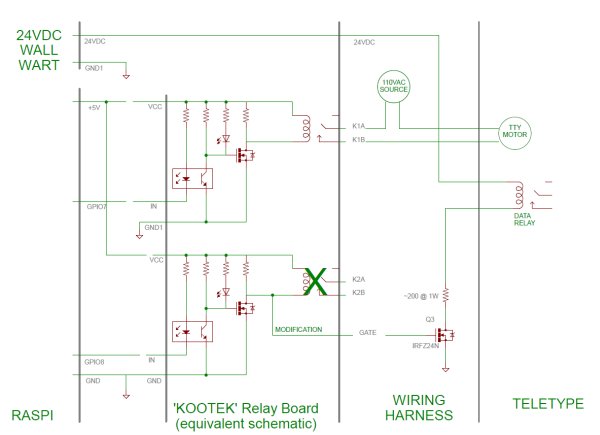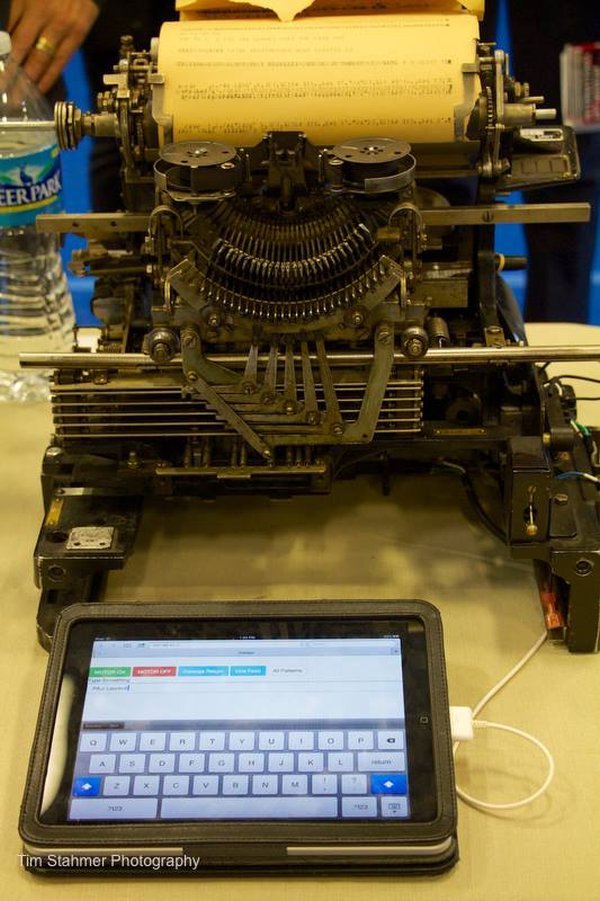I’ve been a nerd for a very long time; As a teenager in the 1970’s I drove up to the Western Union office in my hometown of Buffalo, New York and asked if they had any old teletypes they’d like to get rid of; The next thing I knew I was driving my VW bus away, full of Teletype Gear.
I became with familiar with them; Basically they were like remote typewriters; The keyboard on one would control the printer on another. The process could be automated with paper tape punches and readers. These machines were the mains-stay of printed communication until they were supplanted by fax machines in the eighties. Somewhere over the course of several moves during college, I parted with my big, heavy teletypes.
Wind the clock forward to Maker Faire NYC 2013. NYC Resistor had a Model 15 as part of their Future Crew exhibit. We struck up a conversation about teletypes. I told them how I regretted having parted with my teletypes. They were gracious enough to offer me one of their spares. That is how I once again I was reunited with a Teletype Model 15; I promised to reactivate it and show it off at hamfests and makerfaires.
How To Drive A Teletype
Brushing the dust off some seriously aged neurons, I started sketching what I recalled of the Teletypes wiring.. By modern-day gadget standards, it is astoundingly simple:
A synchronous AC motor drives all the mechanics. Then there is a data relay which must be driven on and off at precisely 45 times per second. This relay closes at around 150ma of current. A readily-available 24VDC Wall-wart with a series resistor is capable of supplying this. The orginal standard called for a higher voltage and a lower current, so this is a bit of a cheat from the original standard, but it works.
One Easy Drive Method: A Relay Board
I came upon the following readily-available board which pretty much fit the bill with only slight modification
An opto-isolated relay board allows you to control a relatively large (line voltage) circuit safely. Here is the overall schematic including the Kootek relay board, slightly modified:
d GND are connected from the control source (raspi). The IN lines can then be tied to any GPIO line from the source. I used 7 and 8. When the line is set to logic 0, the relay will close and the K* lines will be connected together. So we can turn the motor on and off with one channel and run the data relay with the other channel. Wonderful.

For more detail: A 50 year-old Teletype Powered by a Raspberry Pi schematic


